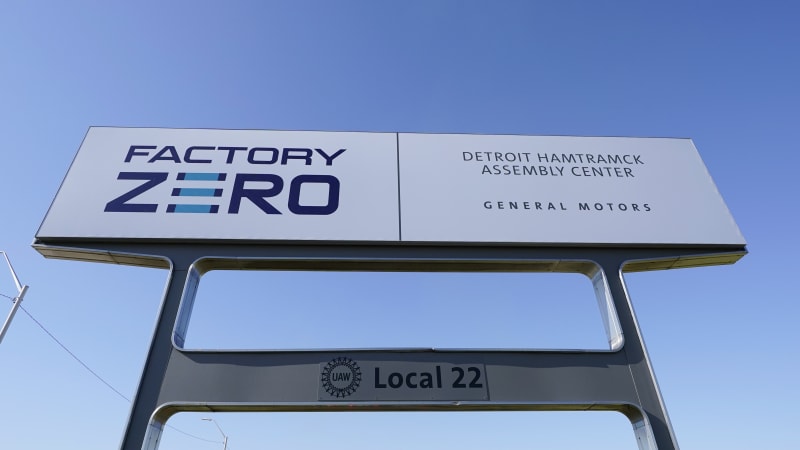
TOLEDO, Ohio — When General Motors boldly announced its goal last month to make only battery-powered vehicles by 2035, it didn’t just break from more than a century of internal combustion engines. It also clouded the future for 50,000 GM workers whose jobs could become obsolete far sooner than they knew.
The message was clear: As a greener U.S. economy edges closer, GM wants a factory workforce that will build only zero-emissions vehicles.
It won’t happen overnight. But the likelihood is growing that auto workers who for decades built machines that run on petroleum will need to do different work in the next decade — or they might not have jobs.
If the history-making shift from internal combustion to electric power goes as GM, Ford and others envision, jobs that now make pistons and fuel injectors will be supplanted by the assembly of battery packs and electric motors.
Many of those components are now built overseas. But President Joe Biden has made development of a U.S. electric vehicle supply chain a key part of his plan to create 1 million auto industry jobs with electric vehicles.
Yet for auto workers, that future could be perilous. Factories will need fewer workers, mainly because electric vehicles contain 30% to 40% fewer moving parts than petroleum-run vehicles. In addition, many union jobs could shift to lower pay as automakers buy EV parts from supply companies or form separate ventures to build components.
Most vulnerable in the transition will be roughly 100,000 workers at plants that make transmissions and engines for gas and diesel vehicles.
They are people like Stuart Hill, one of 1,500 workers at GM’s Toledo Transmission Plant in Ohio. At 38 years old and a GM employee for five years, Hill is decades from retirement and worries about the plant’s future.
“It’s something that’s in the back of my mind,” Hill said. “Are they going to shut it down?”
While he and others hope GM will build EV parts in Toledo, there are no assurances that automakers will need as many workers in the EV era. A United Auto Workers paper from two years ago quotes Ford and Volkswagen executives as saying that EVs will reduce labor hours per vehicle by 30%.
“There are just less parts, so of course it stands to reason that there is going to be less labor,” said Jeff Dokho, research director for the UAW.
“We’re sort of at the beginning of that transition,” said Teddy DeWitt, an assistant professor of management at University of Massachusetts Boston who studies how jobs evolve over time. “It’s not going to be just in the vehicle space.”
The number of jobs lost will likely reach into the thousands, though no one knows precisely. And those losses will be made up, at least partly, by the green economy, from work building electric vehicle parts and charging stations to jobs created by wind and solar electricity generation.
At Toledo Transmission, GM workers make multi-speed gearboxes that eventually will be replaced by simpler EV drivetrains. For workers low on the seniority list, GM’s plans mean that eventually, their services will likely no longer be needed.
“This is that moment to define where we go in the future,” said Tony Totty, president of the UAW local at the Toledo plant.
Even though fully electric vehicles now constitute less than 2% of U.S. new vehicle sales, automakers face pressure to abandon internal combustion engines to fight climate change. California will ban sales of new gas-powered vehicles by 2035. European countries are imposing bans or pollution limits. Biden, in a push for green vehicles, pledged to build a half-million charging stations and convert federal vehicles to battery power.
But with American motorists paying average gas prices $2 a gallon, trucks and SUVs have replaced more efficient cars as the nation’s primary transportation mode.
That demand will keep Toledo in business for years. Yet there’s little doubt the move to electricity is inexorable. About 2.5 million EVs were sold worldwide last year. IHS Markit expects that to increase 70% this year alone.
The trend has heightened anxiety even at plants now running flat-out to meet demand for GM trucks.
“I think that eventually there’s a good chance that I might not be able to retire from this plant,” said Tommy Wolikow, who has eight years in with GM, most recently at a heavy-duty pickup plant in Flint, Michigan.
Not all internal combustion-related jobs will vanish. GM excluded heavier trucks in its EV goal. And some manufacturers will keep making gas-electric hybrids.
The UAW says it views the transformation as an opportunity. “We’re optimistic about making sure that there are jobs in the future, and that the jobs there now are protected,” Dokho said.
Every major industrial transformation, DeWitt said, has resulted in lost jobs and new work. When Americans migrated from farms to cities after the Civil War, agricultural jobs dwindled, but cities were wired for electricity, and jobs like electricians were created, he said.
DeWitt said auto workers could be retrained to make to electric parts and assemble EVs.
The jobs reckoning may come soon because automakers generally work on vehicles five to seven years ahead of when they go on sale, said Karl Brauer, executive publisher at CarExpert.com.
“You could make the argument that by 2028, they’re not going to be doing any more development on internal combustion engine vehicles,” he said.
____
Krisher reported from Detroit.
